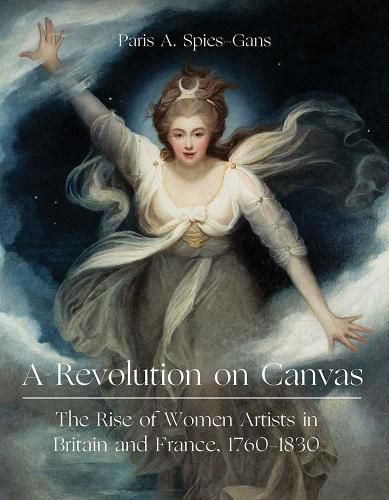Readings Newsletter
Become a Readings Member to make your shopping experience even easier.
Sign in or sign up for free!
You’re not far away from qualifying for FREE standard shipping within Australia
You’ve qualified for FREE standard shipping within Australia
The cart is loading…






The first collective, critical historical study of women artists in Britain and France during the Revolutionary era
A Revolution on Canvas argues that women artists professionalized in unprecedented numbers during the Revolutionary era, engaging with the cultural and intellectual currents of their societies and earning substantial incomes from their work despite the obstacles they encountered.
Through an interdisciplinary analysis of these artists’ careers, this groundbreaking book argues that exactly as political citizenship was being defined as a male privilege, women entered the public sphere as professional artists in significant numbers for the first time. Its subjects include a number of increasingly well-known painters, such as Angelica Kauffman, Elisabeth Vigee Le Brun, and Adelaide Labille-Guiard, alongside copious other artists who were lauded in their own times but are little-known in ours.
This book challenges several longstanding assumptions and myths about women’s artistic activity during this period, ultimately presenting overwhelming evidence to contend that with their art, women engaged profoundly with the cultural, political, and economic currents of the Revolutionary era, navigating institutional inequalities that were often expressly designed to exclude members of their sex in order to forge profitable artistic identities.
$9.00 standard shipping within Australia
FREE standard shipping within Australia for orders over $100.00
Express & International shipping calculated at checkout
The first collective, critical historical study of women artists in Britain and France during the Revolutionary era
A Revolution on Canvas argues that women artists professionalized in unprecedented numbers during the Revolutionary era, engaging with the cultural and intellectual currents of their societies and earning substantial incomes from their work despite the obstacles they encountered.
Through an interdisciplinary analysis of these artists’ careers, this groundbreaking book argues that exactly as political citizenship was being defined as a male privilege, women entered the public sphere as professional artists in significant numbers for the first time. Its subjects include a number of increasingly well-known painters, such as Angelica Kauffman, Elisabeth Vigee Le Brun, and Adelaide Labille-Guiard, alongside copious other artists who were lauded in their own times but are little-known in ours.
This book challenges several longstanding assumptions and myths about women’s artistic activity during this period, ultimately presenting overwhelming evidence to contend that with their art, women engaged profoundly with the cultural, political, and economic currents of the Revolutionary era, navigating institutional inequalities that were often expressly designed to exclude members of their sex in order to forge profitable artistic identities.